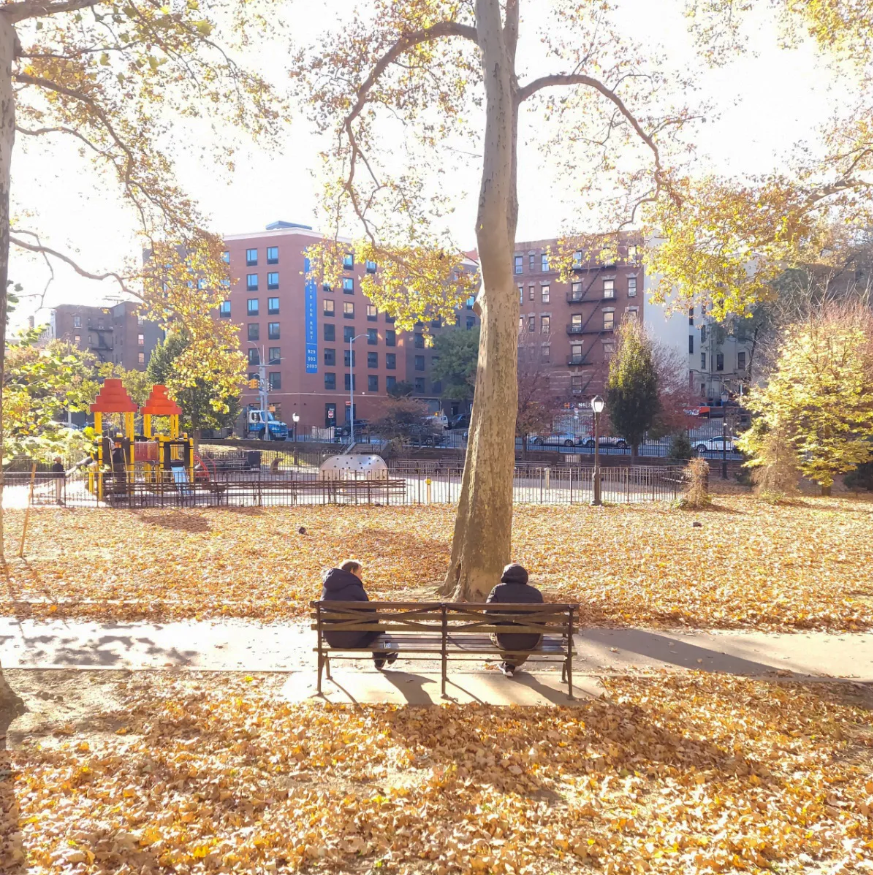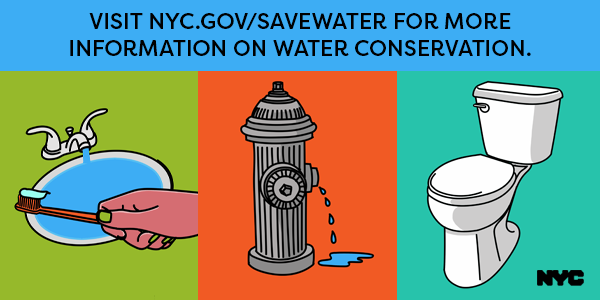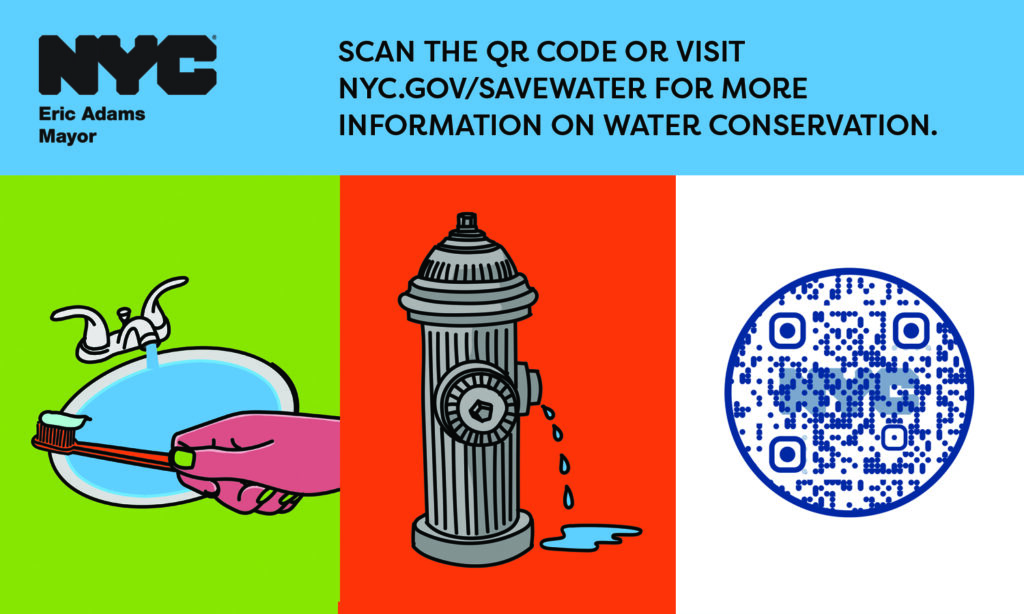
Photo by David Greene
A drought watch in New York City was declared by City officials on Nov. 2. City agencies are taking action to reduce water usage and protect water supplies, they said, as they urged residents to limit water usage during this dry season.
New York City Mayor Eric Adams and New York City Department of Environmental Protection (DEP) Commissioner Rohit T. Aggarwala issued a citywide drought watch on Nov. 2 amid a historic lack of precipitation, ordering city agencies to update water conservation plans and prepare to implement them, and urging the public to help conserve every drop possible.
The announcement came as the City concluded a historically dry October, which saw the second-longest dry streak in city records dating back to 1869. Conserving water will slow the depletion rate of the stored water in city reservoirs and can potentially postpone or eliminate the threat of a serious shortage, City officials said.
“New Yorkers come together in times of crisis, and right now, amidst the dryest spell in recent memory, we need New Yorkers to do just that and conserve as much water as possible,” said Adams. “We’re going to do our part as a city as well, which is why I’m ordering our city agencies to update their water conservation plans and prepare to implement them imminently. By starting to save water now, we’re doing everything we can to make sure that we can water our parks and fill our pools come summer, and to stave off a more serious drought emergency.”
Meanwhile, Aggarwala said, “October was the driest October on record, which has resulted in minimal inflow to replenish the reservoir. Because of this, a drought watch has been declared, and we must now take immediate action. All of us who rely on the city’s water supply, including 8.3 million consumers in the city and another 1.5 million upstate, must make concerted efforts to conserve water.”

Image courtesy of the City of New York
Chief of Staff and Extreme Weather Coordinator Camille Joseph Varlack said, “We encourage all New Yorkers to take this drought watch seriously and conserve water where you can. While water conservation is always essential, it is particularly crucial during extended dry periods, such as those experienced in New York state throughout this fall.” She added, “Implementing voluntary water conservation measures now can help prevent the need for more stringent restrictions in the future. The administration is ready to implement immediate measures across city agencies to conserve water and stands prepared to take further actions if required.”
A drought watch is the first of three levels of water conservation declarations by the City. As conditions continue to evolve, officials said the City may declare a drought warning or, subsequently, a drought emergency, which involve escalating requirements to reduce water usage at city agencies and on New Yorkers.
Keeping reservoir levels high is even more important given the city’s current repair work on a $2 billion Delaware Aqueduct Repair Project. The Delaware Aqueduct begins at Rondout Reservoir in Ulster County and conveys about 50 percent of New York City’s drinking water every day, according to City officials.
They said DEP’s largest-ever infrastructure repair project will prevent a decades-old, 35-million-gallon-per-day leak under the Hudson River. During the ongoing final phase of construction, which includes connecting a 2.5-mile parallel tunnel to bypass the leak, DEP is drawing on increased amounts of drinking water coming from the Croton Watershed, the city’s oldest upstate water supply.
However, the watershed has seen below-average rainfall over the last month, receiving only 0.81 inches of rain this October, compared to historical averages of 3.81 inches of rain for the month. DEP will continue to analyze current and forecasted reservoir levels for their impacts to the project.

Image courtesy of the City of New York
Adams urged all New Yorkers to do their part to conserve water. Some simple tips include:
- reporting open fire hydrants and street leaks to 311, given that an open hydrant can release more than 1,000 gallons per minute, which wastes 1.4 million gallons of drinking water in a 24-hour cycle;
- not flushing the toilet unnecessarily, since, according to the EPA, toilets are by far the main source of water use in a home, accounting for nearly 30 percent of an average home’s indoor water consumption, and each flush can use 1.6 gallons, with older models using as much as 6 gallons;
- taking shorter showers, saving five to seven gallons a minute, and when taking a bath, filling the tub only halfway and saving 10 to 15 gallons;
- not running the tap while shaving, washing hands, or brushing teeth, since faucets use two to three gallons per minute;
- fixing leaks, since a leaky faucet that drips at the rate of one drip per second can waste more than 3,000 gallons per year, according to the U.S. Environmental Protection Agency;
- running the dishwasher and washing machine only when full, and using short cycles if available, and turning off the water while washing dishes;
- installing water-saving fixtures, including low-flow toilets and showerheads, as well as faucet aerators; and
- sweeping driveways and sidewalks clean rather than washing them down with a hose.
Officials said New York City’s average daily water demand has decreased by approximately 35 percent over the past several decades. They said during its peak in 1979, the city’s average water usage was 1.5 billion gallons of water a day. They said that thanks to improved management strategies, systemwide leak detection and repairs, replacing old meters with automated meter readers, and providing an online platform for customers to track and monitor water use and quickly detect leaks in their buildings, the City now uses just 1.1 billion gallons a day on average, and under 1 billion gallons during the winter months.
DEP manages the nation’s largest municipal water supply system, which officials say provides high-quality drinking water each day to nearly 10 million residents, including 8.3 million in New York City. They said the water is delivered from a watershed that extends more than 125 miles from the city, comprising 19 reservoirs and three controlled lakes. They said approximately 7,000 miles of water mains, tunnels, and aqueducts bring water to homes and businesses throughout the five boroughs.
City officials reported power outages on Staten Island on Friday night, Nov. 8, potentially due to a red alert issued in respect of high winds, and separately, NYC Transit reported at around 10 p.m. on Friday night that the 5 train was suspended in both directions between East 180th Street and Pelham Parkway while a tree was being removed from the track at East Gun Hill Road station. Travelers were asked to take the 2 train instead. For service between Pelham Parkway and Eastchester-Dyre Avenue, take a Bx30 bus.
For more information, call 311 or visit the DEP’s Water Savings Tips web-site at www1.nyc.gov/site/dep/




